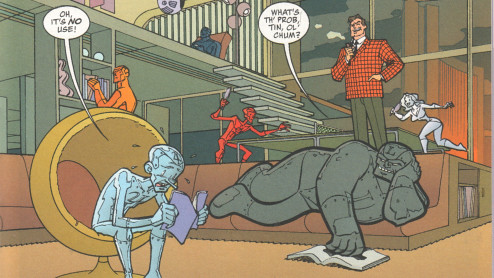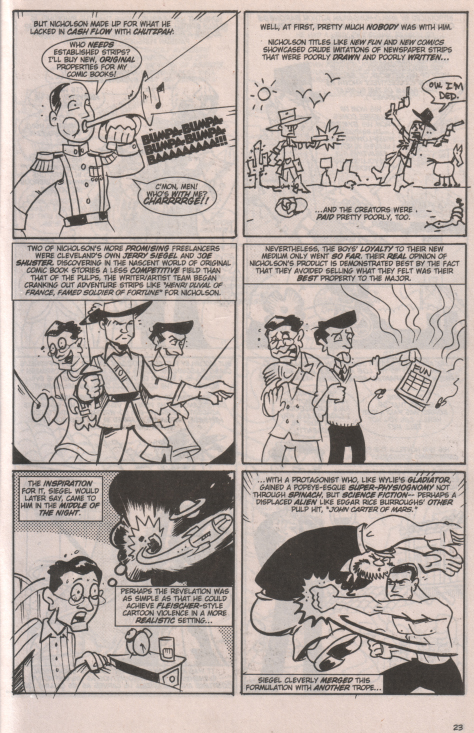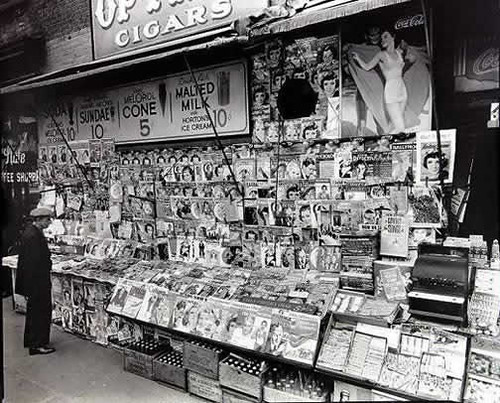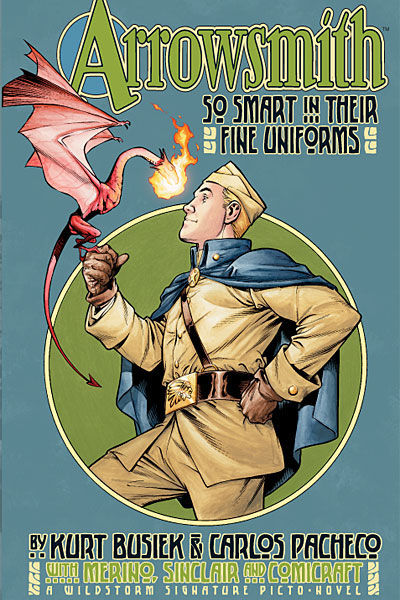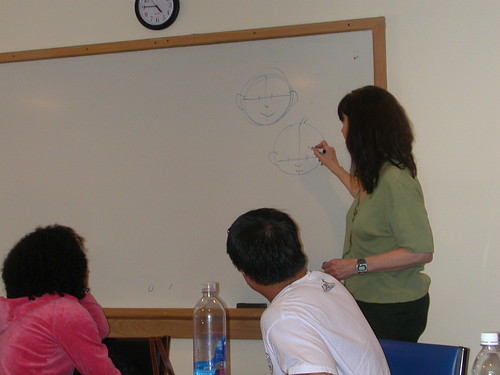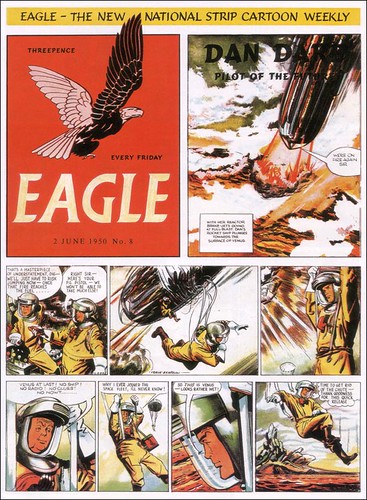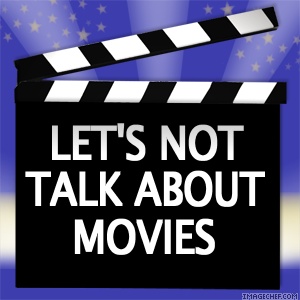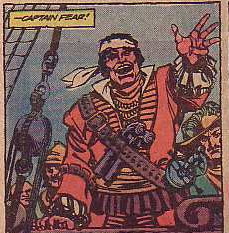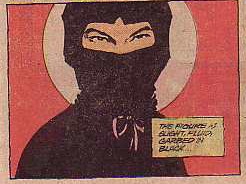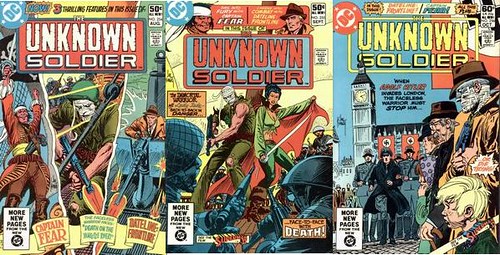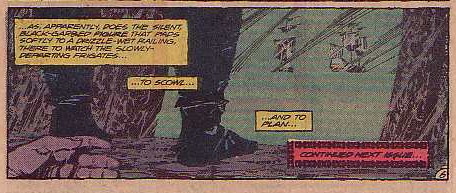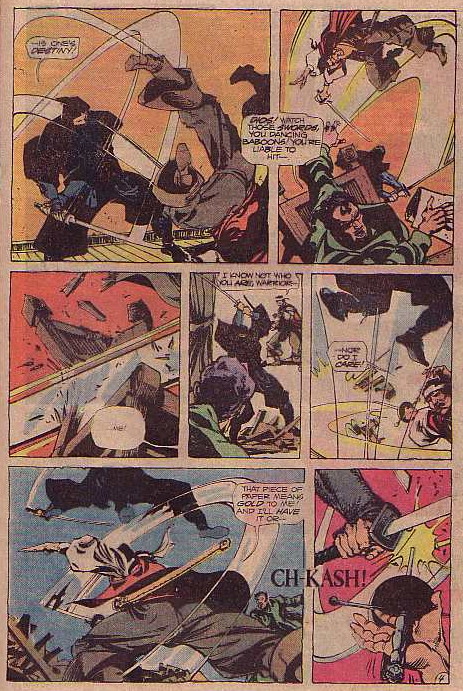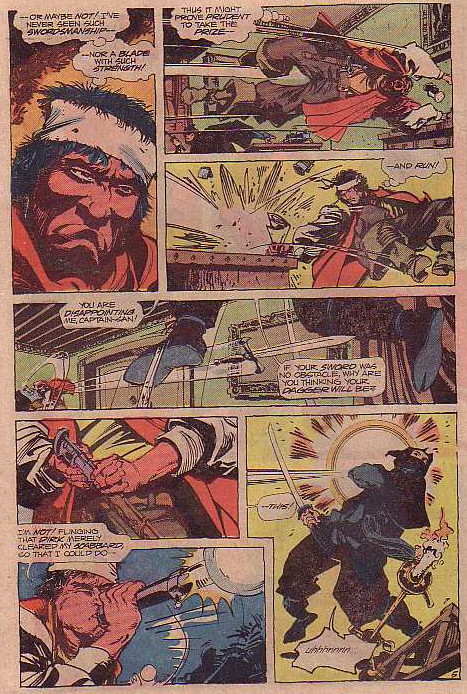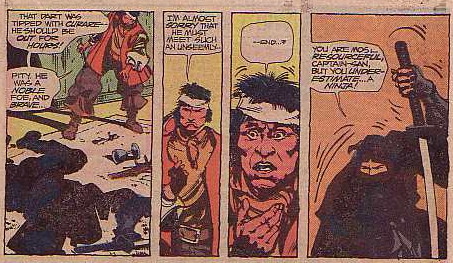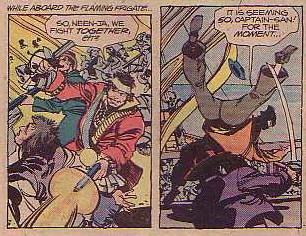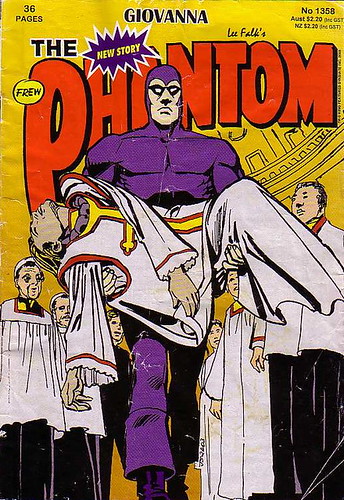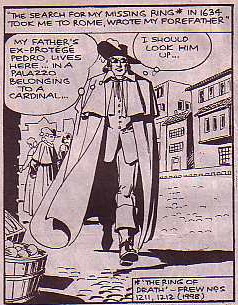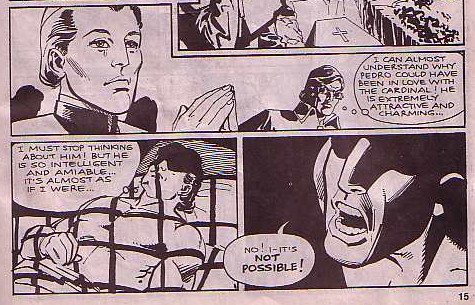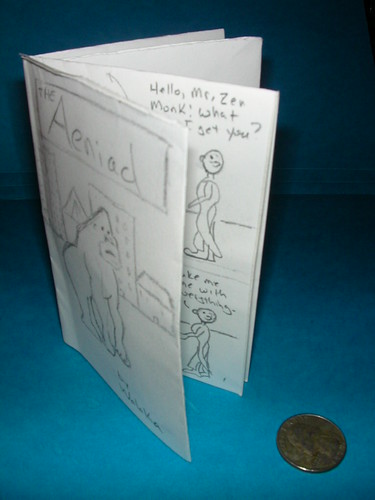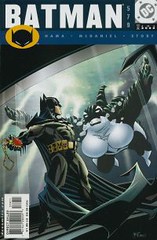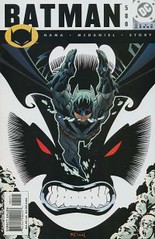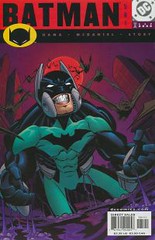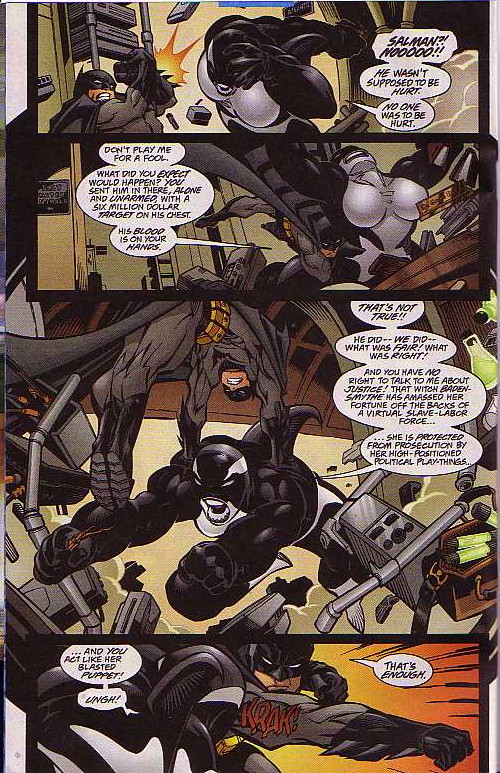Twelve-step review: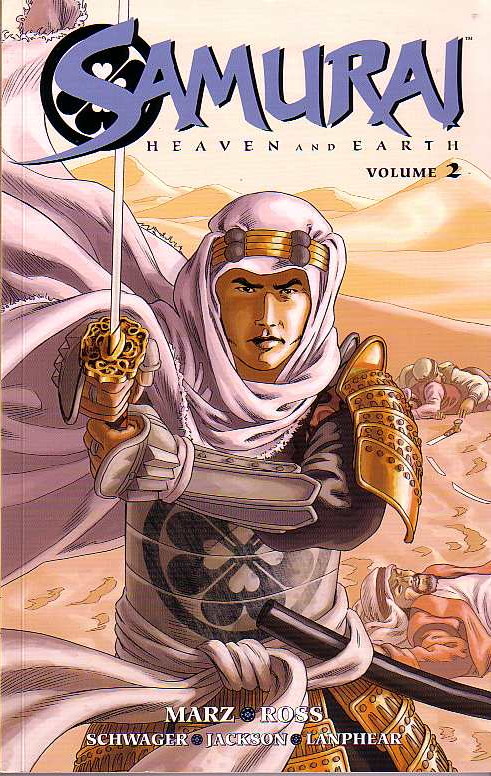 Samurai: Heaven and Earth - Volume 2
Samurai: Heaven and Earth - Volume 2
by Ron Marz, Luke Ross, Rob Schwager, Dan Jackson, and Dave Lanphear
Dark Horse: 20071. Our story continues the adventures of Shiro, a misplaced samurai fighting his way across early eighteenth century Europe in search of his lost love, Yoshi. In this arc, Shiro makes his way though Spain, across the Mediterranean, and then across North Africa from Tripoli to Egypt.
2. Shiro picks up an ally of sorts on his journey: the Arab slaver who initially brought Yoshi from her captivity in China to Europe. They even get a "meet cute" moment:
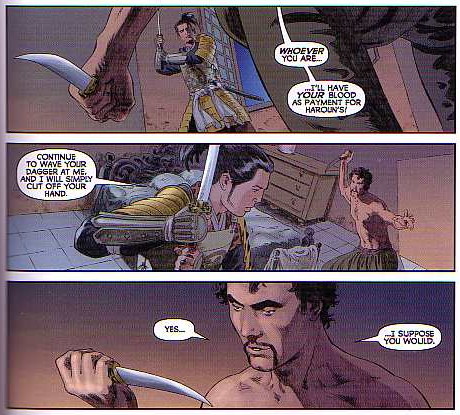
3. Shiro's partnership with Al-Din and his need of the trader's local knowledge and contacts serve to somewhat mitigate the sometimes omnipotent nature of the character. There seems to be no army that Shiro cannot defeat singlehandedly; I wanted to see him succeed more by guile or determination or experience and less by just being better than everyone else.
4. Marz's script now include flashbacks to Japan at the start of every chapter. I think that this device works even more effectively in the collection as it would have in individual issues; the two "stories" merge nicely at the end of the book. Notwithstanding Shiro's unstoppability, Marz paces the quest and cliffhangers that appear throughout the plot well.
5. Don Miguel, the duplicitous Spanish ambassador from the first book, is developed further as a villain of major standing, and Yoshi is given more time of her own to shine.
6. The language issue that I mentioned in my review of the first book is given minor attention, but is still never really addressed. That's still okay.
7. The issue of Yoshi's sexual experiences while in captivity, on the other hand, is addressed directly, forthrightly, and in a sophisticated adult manner. Kudos.
8. Luke Ross's art is still totally gorgeous. The shift in setting to North Africa allows him to indulge himself in a whole different collection of set pieces and determining shots. Somebody referred to this part of the series as
Shiro of Arabia, and it has the same epic sweep as the David Lean film. The people are still beautiful to look at as well.
9. In addition to the flashbacks mentioned above there is another device that I think works better - or only - in the collection. Page six of chapter one (a full-page spread) is perfectively and effectively echoed on page eight of chapter five. I'm not sure this would have been as compelling if I had seen the images four months apart rather than less than an hour. (It is precisely this kind of effect that the form of the physical text has on narrative that I might use as my
research focus for my doctorate.)
10. The book contains another great slew of bonus features: design sketches, unused cover concepts and a gallery of the characters by different artists.
11. The most interesting feature in the extras will be incorporated into my class on comics nd sequential art next quarter: Ross penciled one fight scene as a two-page spread, and then had to re-arrange the panels when he realized the scene would actually fall on the recto and verso of the same page. It is a great example of the interplay of narrative, art, panel design, and page layout in comics.
12. I don't think it's too much of a spoiler to let you know that the lovers are re-united - at least for a time: there are clearly more struggles ahead and another five-issue arc is promised. I'll sure be waiting for the trade.
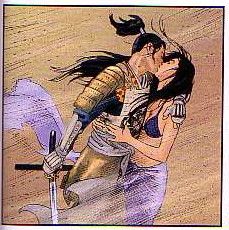
Not a reviewI picked up a copy of
Fantastic Four: The Lost Adventure #1. This book, billed as a Stan Lee/Jack Kirby production, takes an unpublished story by Stan and Jack and presents it three ways: as reproductions of the original pencils, complete with marginal notes; within a different published story that used some of the panels and pages - out of context - as a flashback sequence; and as the complete story as it was originally intended to be seen back in 1970, with
post facto production assistance from contemporary professionals. I find this a wonderful piece of work, if only for its glimpse into the creative and productive processes that go into a comic book. This will be another text for the class to consider.
Five-star review: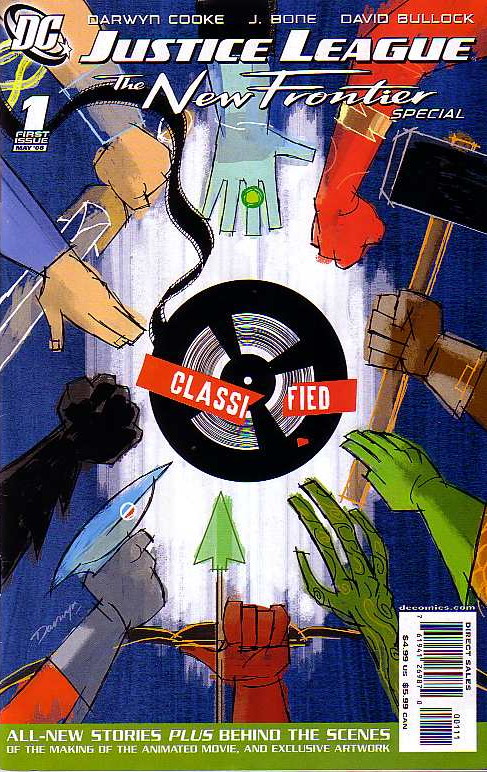 Justice League: The new Frontier Special #1
Justice League: The new Frontier Special #1
by Darwyn Cooke, J. Bone, and David Bullock1. This is not so much a review as a love letter. Darwyn Cooke just
gets superheroes better than anyone else at DC and has a design sensibility and visual
elan than I just can't get enough of.
2. Cooke's fight between Superman and Batman in the main story makes you realize just how silly and self-indulgent Frank Miller can be, and was even back in
The Dark Knight Returns. Cooke, on the other hand, provides a slam-bang action story without sacrificing any character consistency. Cool beans, indeed.
3. I grow more and more in love with Cooke's Wonder Woman. Man-o-man, wotta woman!

4. The Robin and Kid Flash team-up tale was everything that I had hoped The Teen Titans Lost Annual was going to be, and wasn't. Haney's magic didn't survive him, and that post-mortem concoction just fell flat. This story, however, is an
hommage, not a reproduction, and it positively zings; can you dig it, daddy-o?
5. The rest of the issue was full of more fun: a pitch-perfect Rip Hunter intro; a frothy, funny Wonder Woman-Black Canary-Gloria Steinem (!) team-up; some behind the scenes art from the
New Frontier DVD; and the hidden jewel of the piece: a National Comics in-house ad from an Elseworld where John Henry and Martian Manhunter had their own ten-cent comics alongside Green Lantern.
Compare and contrastI went to see the
Persepolis movie today.
Y'know, I have to say that I was never a big fan of the book. It was the Seattle Public Library's "Everybody Reads" pick a few years back, and I even gave a talk on "How to Read a Graphic Novel" in conjunction with that event that used the memoir as its centerpiece, but I never really thought it was that good. Marjane Satrapi clearly has a compelling story to tell; I just don't think that she is that accomplished as a storyteller. The book doesn't really exploit the potential of the form, the art doesn't captivate me, and the story seems to just chug along without much momentum. Maybe I'm missing something, but I never quite got what all the fuss was about.
The film, on the other hand, has some magical moments, is beautifully visualized, and has condensed the story into a tighter narrative arc that moves briskly. It was not a great film, but surely a good one. When I came home, I took another look at the books, and realized that the parts that seemed to work the best for me on the screen were those parts that deviated the most from Satrapi's original vision on the page. I don't know if she just had wonderful collaborators or if film is her true medium, but the movie is so much better than the comic that it is hard to figure out. I'll have to give this a lot more thought (and maybe ask my students!).
MetaIt seems this little corner of the blogoverse must have passed some sort of threshold, because I am starting to get some solicitations for reviews, which has never happened before. This really isn't primarily a "new stuff" blog, so I don't think I'll be going that way, but I wanted to share a piece of the latest request I got, verbatim:
I was wondering if you would be interested in reading it and perhaps giving it a review on your "internet web-log." So, is that the subtlest irony ever or genuine?

